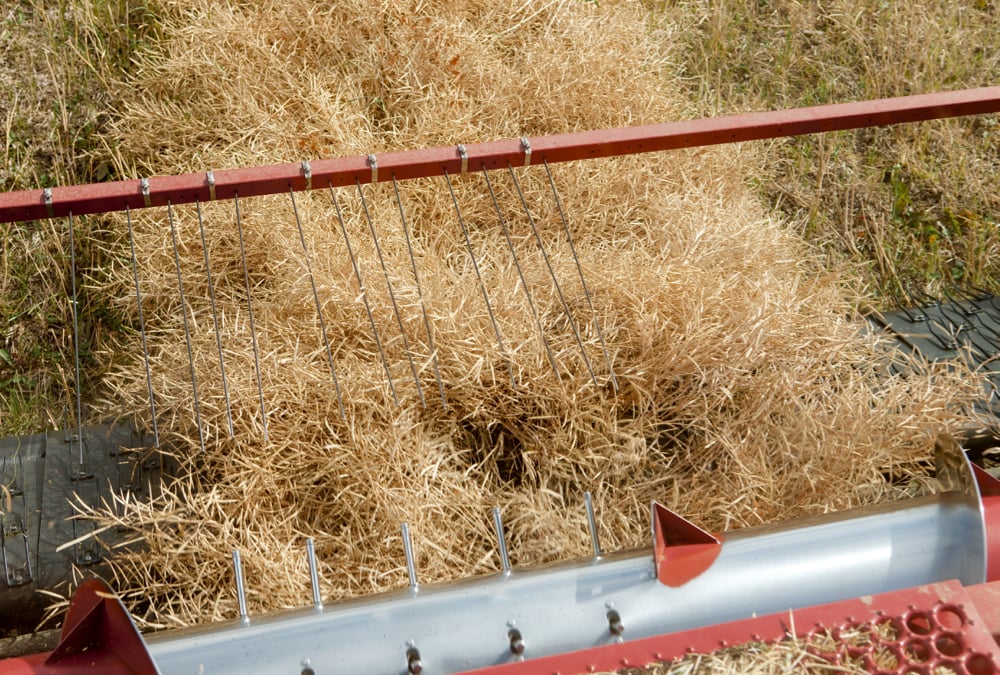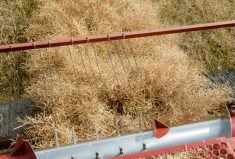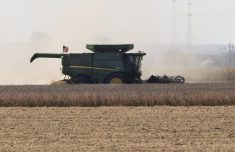In most years, aster yellows aren’t a concern for Manitoba canola growers, but this year could be an exception.
In its first insect update of 2012, released in late April, Manitoba Agriculture noted a larger than usual population of aster leafhoppers is present in Minnesota this spring. Aster leafhoppers transmit aster yellows, a disease that turns canola plant purple and deforms the shape of pods.
Canola growers don’t need to worry, just yet, said John Gavloski, Manitoba Agriculture entomologist, because it’s too early to know if southern winds will blow those leafhoppers up to Manitoba and if the insects are carrying a significant amount of the disease.
Read Also

Alberta harvest wrapping up: report
Harvest operations advanced to 96 per cent complete in Alberta as of Oct. 7, with only a few late-seeded cereal and canola fields remaining, according to the latest provincial crop report.
“Some years they’re carrying more pathogen than other (years),” said Gavloski, who noted there have been a few days in May with strong southerly winds since he issued the insect update.
“If anyone is seeing a lot of leafhoppers, let us know. We can identify them to see if they are aster leafhoppers.”
Besides canola, the disease is a major concern for carrot growers in Manitoba. An influx of aster leafhoppers in the spring can severely damage carrot crops because aster yellows stunts the vegetable’s growth and the infected carrot will taste bitter, according to the Manitoba Agriculture website.
Aside from aster leafhoppers, canola growers should also be keeping an eye on flea beetles this spring, Gavloski said.
After the unusually warm March, the beetles popped up in fields toward the latter end March, feeding on volunteer canola.
Detecting flea beetles that early in the spring is highly unusual, Gavloski said.
Insecticidal seed treatment protects canola from flea beetles for three to four weeks in the spring. But a cool April and slow emergence may cause problems for growers who seeded early last month because the plant needs three leaves to withstand feeding pressure.
If the seed treatment expires before the canola plant has three leaves, a producer might have to apply insecticide to protect the vulnerable crop, Gavloski said.
“One of the options they have would be using a foliar spray if the feeding was getting very intense.”
Over the winter and this spring, Gavloski has heard a few comments about grasshoppers, especially in southwestern Manitoba, where overland flooding prevented hundreds of farmers from seeding a crop last spring.
As a result, folks in the region may think a grasshopper outbreak is possible because there are more bare fields than normal.
Gavloski said that relationship is a misconception because the key factor behind a grasshopper outbreak is hot, dry conditions rather than bare land.
“Drought can lead to barren land … but it’s not the barren land that leads to grasshoppers, it’s the dry conditions.”

















